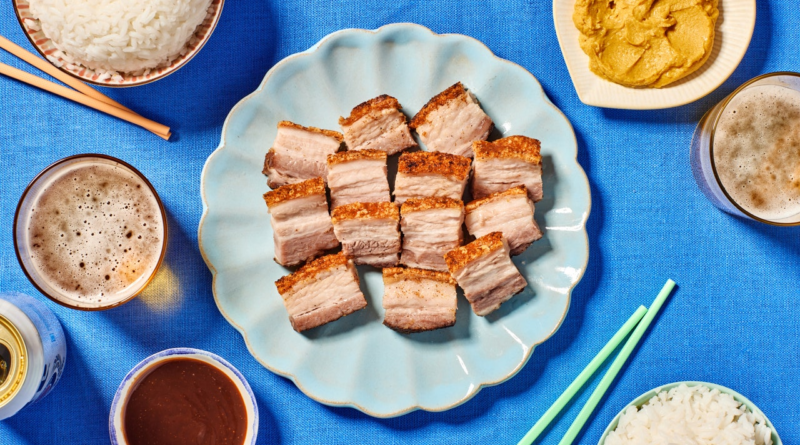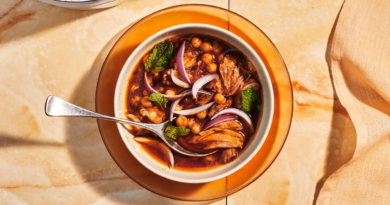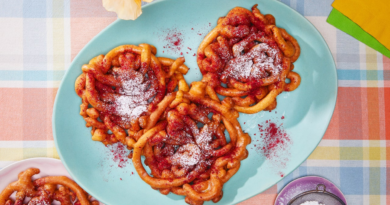Siu Yuk (Cantonese Roast Pork)
When it comes to the most incredible Cantonese roast pork, the fact of the matter is that there really are no secrets. Fresh, local pork is butchered, seasoned with little more than salt and sugar, hung to marinate, pricked, and then roasted whole, often at one but sometimes two temperatures. From one perspective, the process is pretty simple: Season the pork and roast it. No top secret methods, no proprietary chemicals, no unexpected ingredients; it’s a technique as old as time.
From another perspective, delicious Cantonese roast pork is only delicious as a result of experience. The hand of the chef, the familiarity of the oven, and the understanding of the pig coalesce into the transcendental experience we know as siu yuk. That’s what we travel for when we’re in Hong Kong and Guangzhou, hunting for that perfect bite.
Back home, most of us aren’t seasoned Cantonese barbecue chefs. We also certainly don’t have the luxury of the underground infernal ovens like the ones you’ll find at Red Seasons in Hong Kong. We certainly wouldn’t have the space to roast whole hogs.
However, that’s not to say that we need to compromise on quality roast pork. Even at home we should aim for the same standards of success that we hold our barbecue chefs to. First, thoroughly seasoned, well-cooked, succulent flesh. Second, skin that’s crispy but not hard. And finally, perhaps most importantly, sesame skin (芝麻皮)—small, even, sesame-sized blisters across the top of the skin.
This recipe utilizes a whole host of techniques absent in most traditional Cantonese barbecue kitchens which, while not individually necessary, collectively lead to a satisfying homemade product. Trimmed, center-cut pork belly helps us achieve an even roast. The skin itself is blanched to kickstart the process of rendering fat, softening the skin, and converting the collagen into gelatin, which melts away in the heat. Then, small holes, poked all over the skin with a bundle of bamboo skewers, allow for the bubbles to form. Rubbing vodka onto the pork before it cures overnight helps the skin dry and puff as it cooks because alcohol evaporates faster than water as it cooks. Finally, the pork is roasted, initially at a low temperature for over a hundred minutes to encourage a gentle softening of the skin, then at a high temperature, broiling, to quickly expand small pockets of air under the skin, stretching the surface thin before firming and making the skin crispy.
It’s a lot of work. For those of us living close to a quality Cantonese barbecue restaurant, I’m not entirely sure it’s worth the effort. However, there is something to be said about the deep satisfaction that comes from mastering a culinary challenge and that sense of gratification of creating something exquisite with your own hands.




